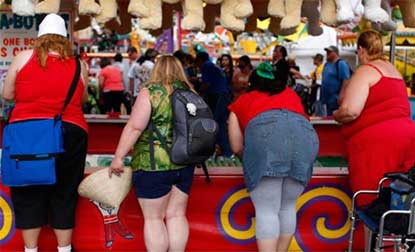SUMMARY
The GSWS commissioned the study to analyse wellness tourism and understand its global and domestic impact

Wellness tourists overall also tend to be ‘high-yield’ travellers, spending 130 per cent more than the average tourist. Reuters
Travellers are growing weary of the strain of travel—often associated with poor sleeping, unhealthy eating, excessive drinking and disruption of fitness routines—which increasingly differ from wellness habits adopted during their everyday lives. This, combined with a desire to escape from daily stress and to improve personal well-being, is leading more consumers to consider wellness travel, according to a recent study from SRI International in conjunction with the Global Spa and Wellness Summit (GSWS), education and research organisation.
The GSWS commissioned the study to analyse wellness tourism and understand its global and domestic impact. The findings of the study were presented at the inaugural Global Wellness Tourism Congress (GWTC) held in India in recently as well as at a special press briefing held in New York City.
Wellness travellers fall into two categories: the primary wellness traveller, whose sole purpose or motivating factor for their trip and destination choice is wellness, and the secondary wellness traveller, who seeks to maintain wellness or participate in some wellness experiences while taking any type of trip. Secondary-purpose wellness tourists constitute the significant majority (87 per cent) of total wellness tourism trips and expenditures (86 per cent).
Wellness tourists overall also tend to be “high-yield” travellers, spending 130 per cent more than the average tourist. Because of this, they are very attractive to many countries interested in the business of wellness tourism.
Wellness tourism targets travellers who seek physical, social, mental, spiritual, emotional and environmental experiences. Wellness tourists embrace a variety of activities including healthy eating, spa and beauty, eco and adventure, and fitness as well as more internal pursuits such as personal growth, mind-body and spiritual endeavors.
In addition, non spa-related, healthy travel represents the majority (59 per cent) of the wellness tourism market, with spa tourism representing the remaining 41 per cent.
According to the study, wellness tourism accounts for nearly US$ 439 billion and will reach nearly US$ 679 billion by 2017. More than half of the projected growth in wellness tourism trips through 2017 will take place in Asia, Latin America and the Middle East / North Africa.
Domestic wellness tourism is significantly larger than its international equivalent—representing 84 per cent of wellness tourism trips and 68 per cent (or US$ 299 billion) of expenditures. International inbound wellness tourism represents a US$ 139 billion market (32 per cent of total).
Ophelia Yeung, lead author of the study and senior consultant, Center for Science, Technology and Economic Development, SRI International, said, “This is an important time for wellness tourism, as it represents the intersection of a powerful lifestyle trend and the growing global tourism industry. The positive effects of wellness tourism, from both the economic and sustainability perspectives, are sure to be increasingly felt by every region around the world in the future.”
In addition, wellness tourism is directly responsible for 11.7 million global jobs, which delivers US$ 1.3 trillion in global economic impact—or 1.8 per cent of the world’s GDP in 2012.
source: http://www.financialexpress.com / The Financial Express / Home> Travel & Tourism / FE Online – Mumbai / November 22nd, 2013

